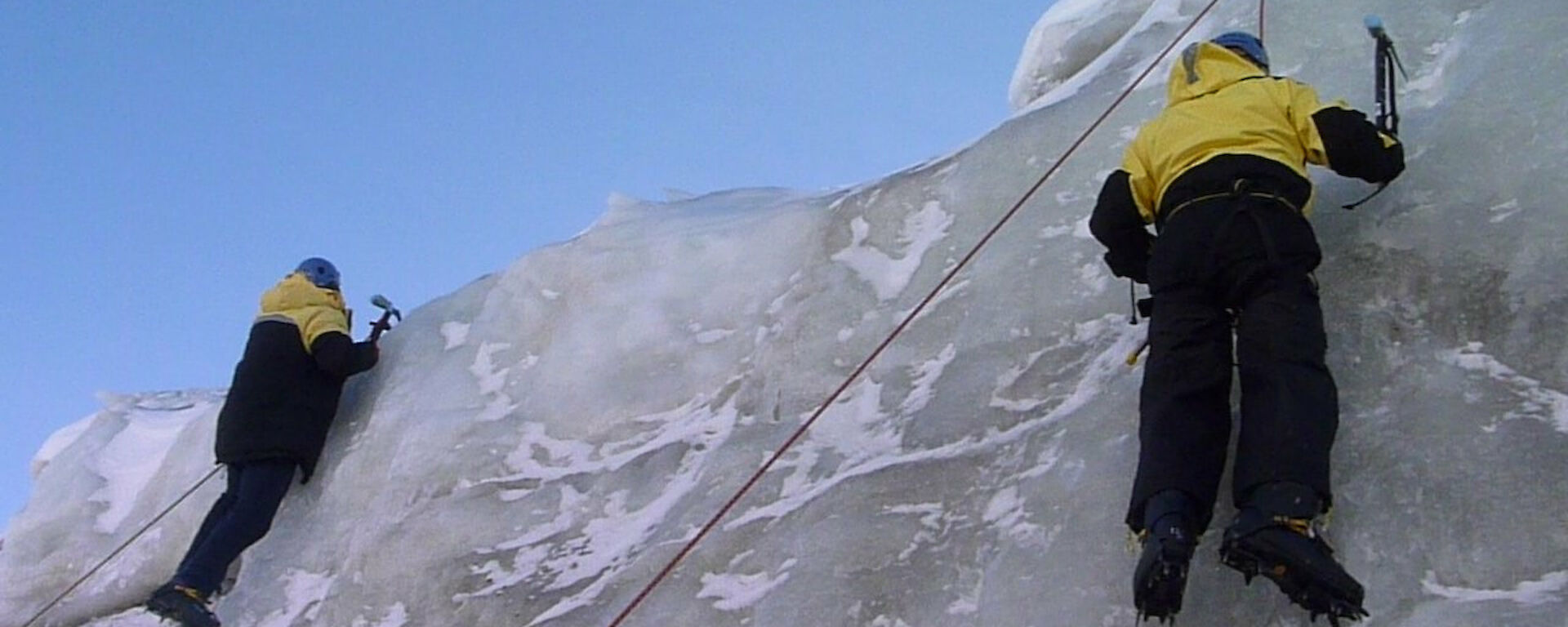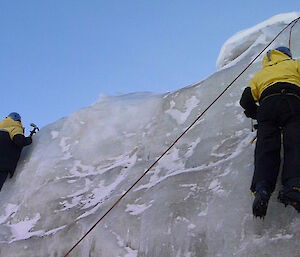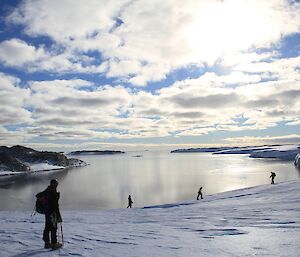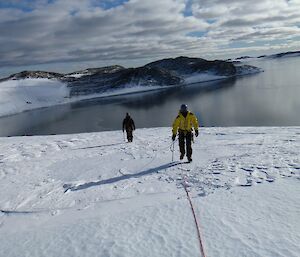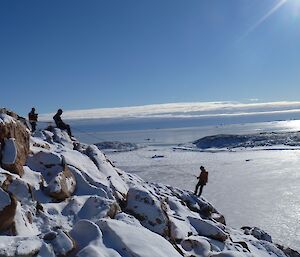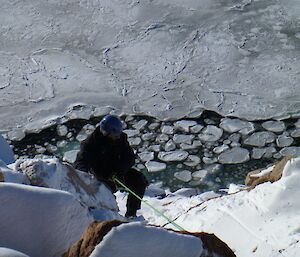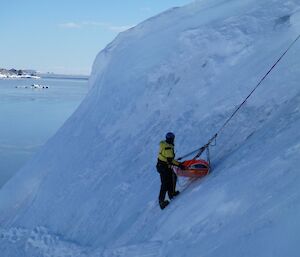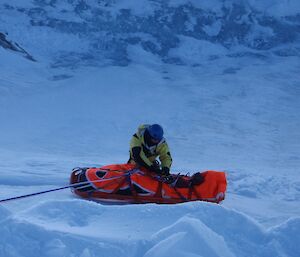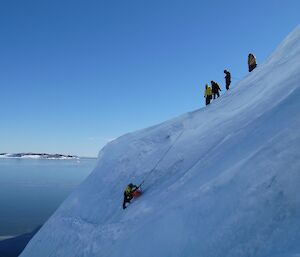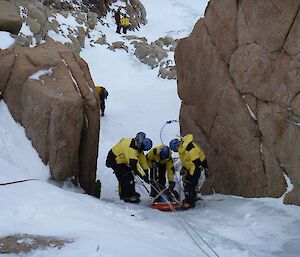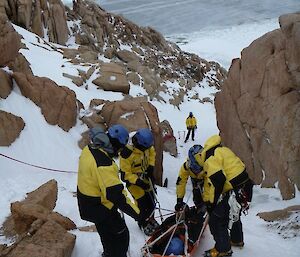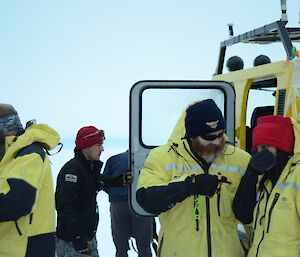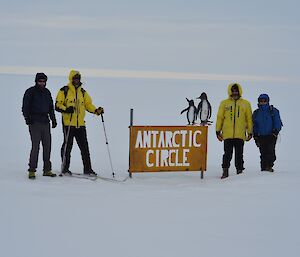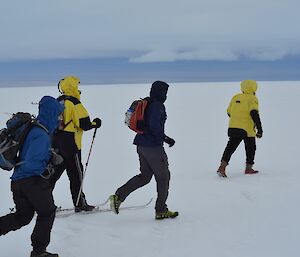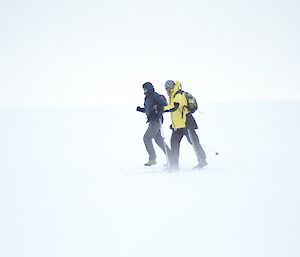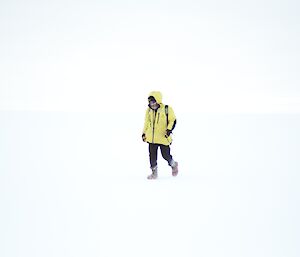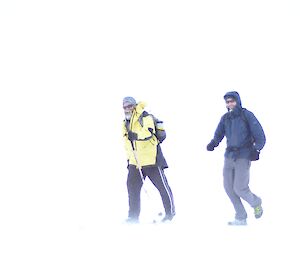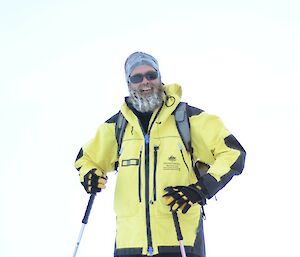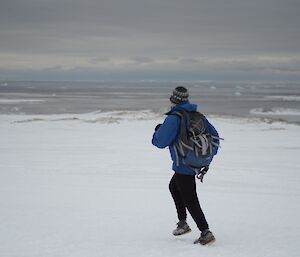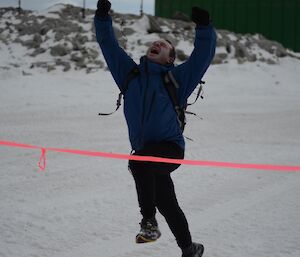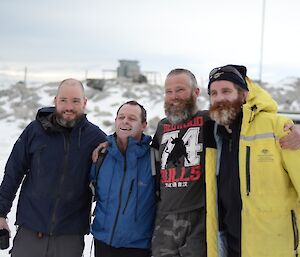A very important part of living and working in Antarctica is to maintain a healthy focus on recreation, and in particular to get outside and experience the place. At the weekend some of our more active expeditioners did just that.
Before we left Hobart to come south our winter chef, Gavin, was already talking about a Casey marathon. Gavin has run several marathons previously. Four of these were in the Patriot Hills in West Antarctica at latitude 80 degrees south. Locations of other marathons that Gavin has run include Alice Springs, Everest Base Camp and the Swiss Alps. Once down on station Gavin realised he had a like minded expeditioner in Craig, the senior meteorological observer who is also staying for winter. Craig has run ten marathons in the past including the Kilimanjaro marathon in Tanzania as well as three ultra marathons. The two of them, joined by experienced Antarctic plant operator Johan Mets, a skiing aficionado, soon became an unstoppable force on the way to organising the event that finally occurred last Sunday.
Running a marathon, like any activity in Antarctica, can quickly become a dangerous rather than simply challenging thing to do. Accordingly a great deal of work went into preparing for and planning the run. The station leader was very keen on four laps of a route from the station to the skiway, or maybe even fourteen laps of the Nordic ski loop so that everyone could be kept close to station. Alas the participants thought these ideas were pretty lame and had their hearts set on a run from the Antarctic Circle on the plateau (a two hour drive away by Hägglunds) back to Casey Station – a distance of exactly 45 kilometres — a little longer than a standard marathon. Many discussions later — with head office, the polar medicine unit, the station doctor and the field training officers – and a plan had been put together with a comprehensive risk analysis. The date was set, the participants (and support staff) briefed and all that was needed was a fine day. Easy…
Howling 70 knot winds and visibility down to 30 metres two days before the event didn’t fill people with much optimism but, on the day, dawn broke with winds under 10 knots, the temperature a mild −12 degrees and visibility excellent. So at 7:00am two haggs, with four participants and four support staff headed away from station. Just before 9:00am we arrived at the Antarctic Circle where the weather wasn’t so mild as it had been on the coast, a biting wind making the support folks feel very happy that they would be spending the day in the vehicles. But the weather was still within (just) the parameters agreed and after a review of plans, organisation of clothing and safety gear and a quick posed photo, everything got underway.
The four participants soon separated with Craig running and Johan skiing out in front whilst Gavin kept a steadier pace running a little way back. Sweeping the group was Seamus, who had decided to use the event as an opportunity to go for a long walk.
The two vehicles, one of which contained the station doctor (Sheri) and all her first aid and medical kit, swept back and forth between the participants, providing drinks and food, checking on warmth and fatigue and generally making sure that everyone was well and happy and enjoying the event.
About an hour into the marathon the wind increased and the snow started blowing, reducing visibility significantly. But just when it looked like we might have to call everyone back to the vehicles, the weather settled, visibility improved and the guys had only to contend with covering 45 km… on foot… in Antarctica – a much easier challenge!
Seamus discovered that walking long distances in Antarctic work boots wasn’t without its disadvantages to foot health and very sensibly decided to bolster the support team several hours into the marathon (but not before clocking up a walked half marathon for his trouble). The other three participants carried on relentlessly throughout the day, with Craig finally arriving on station almost exactly six hours after the 9:00am start and Johan skiing in about 30 minutes later. Gavin, the driving force behind the event, arrived on station to shouts of encouragement from an adoring crowd at 5:00pm, after spending a gruelling 8 hours trudging across the snow and ice.
The day was a great success. Everybody achieved what they set out to do. It was great to see the support the participants were given, from preparation and planning, to covering shifts for people so they could be part of the event itself or play a support role in the field and of course those who spent their day driving up and down the course to provide direct support to the participants. There is already talk of another endurance event in winter.
Congratulations to Craig, Johan, Gavin and Seamus for an outstanding effort and a big thanks to Sheri, Misty and Stu for their support in the field.

